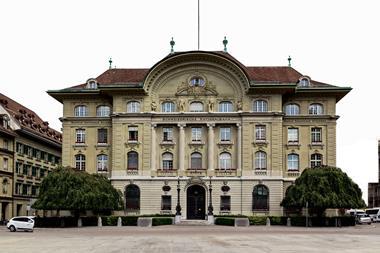The share of alternative assets in some Swiss pension fund portfolios has surged in the 2014 due to a new definition of the category.
In summer 2014, revised investment regulation BVV2 for Pensionskassen widened the definition of ‘alternative assets’ to include ‘non-traditional’ bonds, including asset-backed securities, debt issued by non-listed companies, real estate investments with more than 50% leverage and infrastructure.
Following the change, the CHF21bn (€20bn) Migros Pensionskasse (MPK) saw its share of alternative assets increase from 3.5% to just over 11% year on year – almost solely because of the new regulations.
Managing director Christoph Ryter noted this was “still well below” the 15% cap for alternatives set down in the BVV2 regulations.
At the MPK, this category mainly includes loans granted to non-listed companies, infrastructure and some real estate investments with leverage beyond the 50% mark.
Ryter said the new definition increased not only the size of alternative allocations in some portfolios but also their costs.
The Swiss government, introducing full transparency on asset management costs and mandatory total expense ratio reports for all Pensionskassen investments, is now considering whether to cap the share of costs for alternative assets.
Meanwhile, the CHF10bn Vita Sammelstiftung already has exceeded the 15% limit – this is permitted as long as the fund provides an explanation of its risk strategy to the regulator.
On a panel at this year’s Swiss Pensions Conference, the multi-employer plan’s managing director, Samuel Lisse, said: “Because we do not have a say in target returns like the legal minimum interest rate (Mindestzins), we must allocate a higher percentage of our portfolio to alternative asset classes to achieve a better diversification and ultimately a better performance.”
Vita’s alternatives exposure is mainly to senior secured loans and hedge funds, while the fund has almost completely divested from commodities.
According to some pension fund experts, Swiss Pensionskassen are currently “not using all the freedom they are given” under the investment guidelines.
In an ad hoc survey among the delegates at the conference, the vast majority indicated they believed alternative assets would be the best-performing asset class over the next three years on a risk-adjusted basis – Swiss bonds were expected to be the worst performers.
But Roman Denkinger, head of asset management at Swisscom’s CHF9.5bn pension fund comPlan, stressed that alternatives had to be viewed as “a heterogeneous asset class with very different investment possibilities”.
One of his pension fund’s alternative strategies is financing small and medium-sized enterprises directly, which, according to Denkinger, “requires a lot of in-depth due diligence and time”.








No comments yet